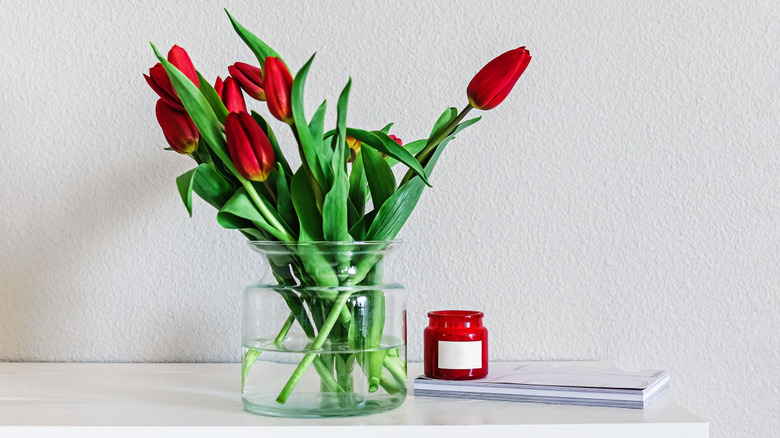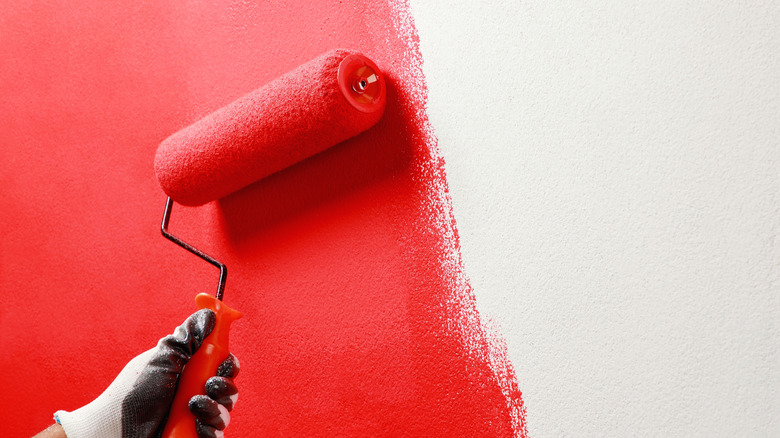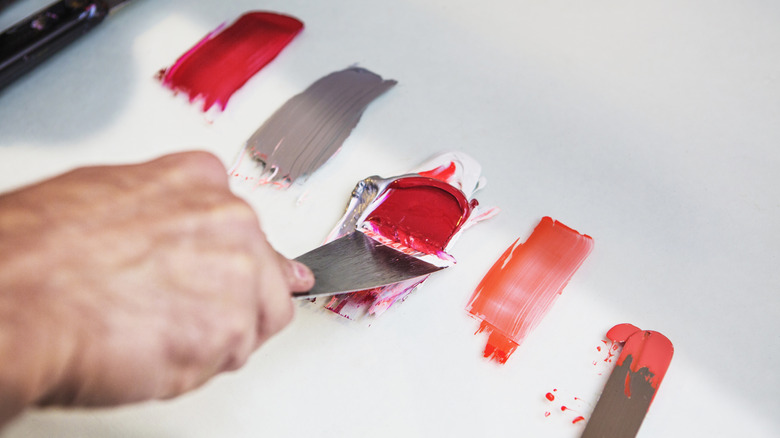How To Apply The Unexpected Red Theory To Your Home
We may receive a commission on purchases made from links.
When you think of colors that go with everything, your mind probably jumps to neutrals like black, gray, white, or if you're feeling adventurous, beige. But while all of these colors tend to play well with others, they aren't the key to making your room feel bright and lively. Which color will? Red. As unexpected as that answer may have been, that's kind of the whole point. Adding a pop of red to a room — even if it doesn't go with the rest of your color scheme — can be a great way to make it come alive.
While it may seem counterintuitive that adding a contrasting pop of red can make a space feel more cohesive, there is some science behind it. In color theory, red is associated with strength, passion, and joy. Since it can also bring about feelings of anger and aggression, using it in small quantities can add some liveliness to a room without feeling overwhelming. A powerful color, it also brings an intentional disruption to a room, giving it a focal point and preventing uniformity in an otherwise monotone space.
If you're worried that it will stick out and won't work in your space, you're kind of right ... but that's also what makes it pop. Even if it doesn't seem to fit in your palette, since red is a primary color it's either present in or complementary to all other colors (besides the other primaries, that is). So, your brain processes it as relating to the other colors even if it doesn't seem like a match, which means that there are a surprising amount of colors that go with red.
Here's how to see red in your home in your interior design, but not your arguments
If you want to try out this theory in your own home, the good news is that it is one of the simplest room updates that you can do. All it really requires is adding or replacing an item with a red one. Since it is supposed to stand out and be unexpected, that also means that you can choose just about whatever you want to be your red item.
Choose anything as small as a pillow, picture frame, or potted plant, or go for a piece of furniture like an upholstered swivel chair, side table, or even a painted accent wall. The bigger your red item is, the more influence it will have on a room, so you may wish to keep to smaller choices for relaxing spaces like the bedroom. But going all in on a totally hot red kitchen could give your space the lift you were looking for.
You also don't have to commit to a single object. If you would prefer, you can choose something with dispersed red — like a white and red gingham pattern — or a couple of different pieces throughout the room. If you do choose this, it won't have quite the same effect as a single item when it comes to being a focal point, but it will add more visual interest, texture, and energy to a room. Don't want to commit to anything permanent? Go for multiple red accents throughout your room. Try accessorizing with pillows, blankets, Driftaway curtains, or lampshades to incorporate the trend without regretting a renovation.
To make this trend work for you, avoid a few things
Although the unexpected red theory is pretty straightforward, there are things to keep in mind when trying it out in your own home. One of the most important is the shade of red. Because red is a primary color, when in doubt, stay as close to true red as possible.
If you want to play around with shades, aim for one that works within your color palette. If you have more muted earth tones, opt for a rust or barn red. If you have a room of pinks and pastels, you may wish to stay more on the pink side with a magenta or raspberry. If you still aren't sure which shade would be right, try a tertiary color — meaning, the result of a true red mixed with half the amount of another dominant color in your room. If you decide to paint a wall or even the full room, make sure that it has ample natural light. Otherwise, it can easily feel dark and overwhelming instead of bright and invigorating.
The second thing to consider is that even though the color may be out of the ordinary for you, keep it within your style preferences: make sure you choose something that you actually like, and don't just add in something random because it's red. The key is to make it feel intentional, so throwing something like a red leather '50s diner stool probably wouldn't work in a traditionally decorated Victorian house, but a rich red curtain, accent rug, or a painted dresser could be key to making it feel fresh while remaining cohesive.


